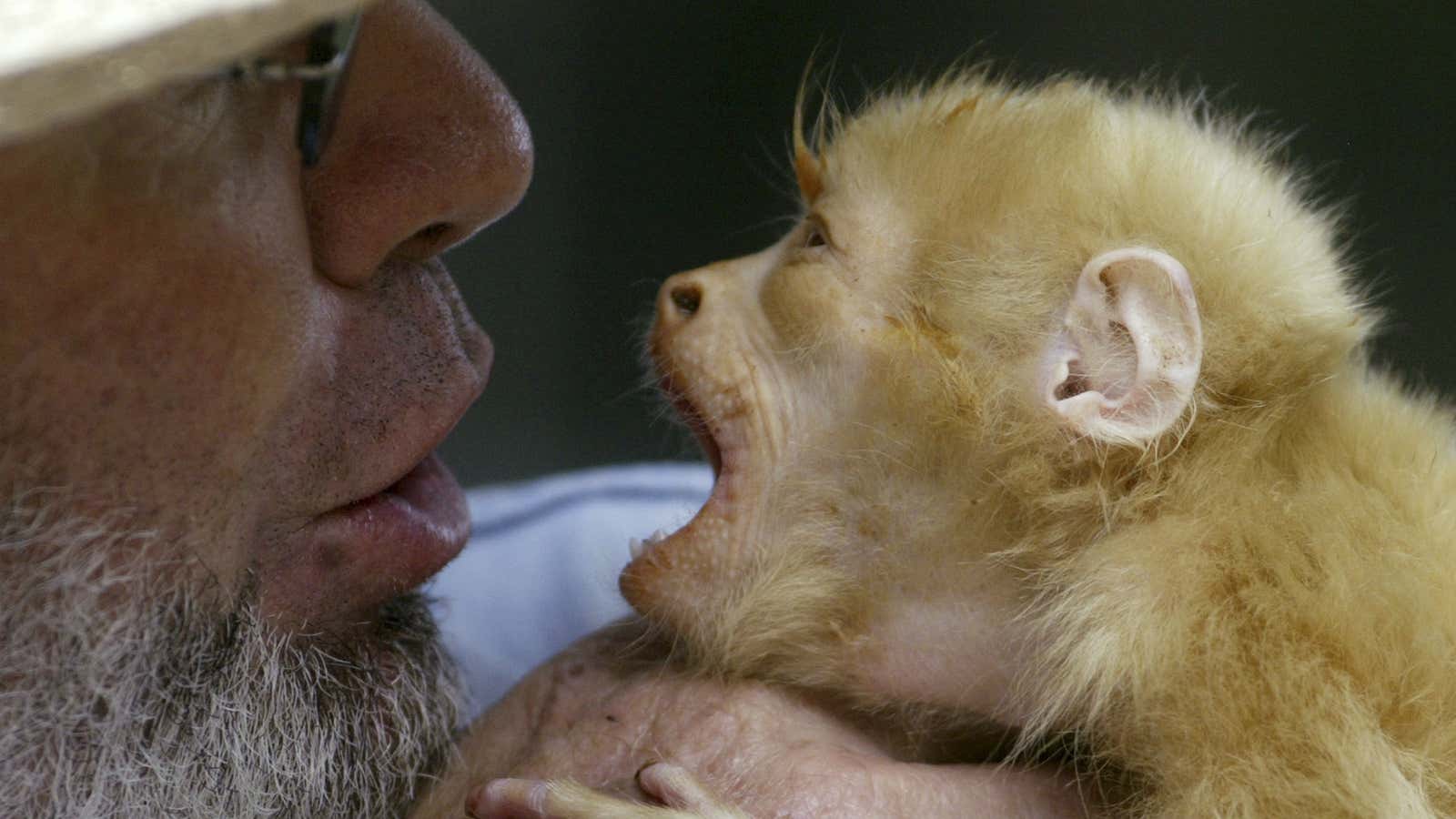A howler monkey weighs little more than a pug but can roar as loud as a tiger. Researchers at Cambridge University have found a surprising trade-off across howler species: the louder a male’s roar, the smaller his reproductive organs. His testicles, to be specific.
We know what you’re doing. Stop it. Anthropomorphizing animals is not scientific and can be a hindrance to the study of biology. We are talking howler monkeys. If this data for some reason calls to mind the image of a grown male human driving a flashy car blaring a club-sized sound system to compensate for the tiny, tiny gonads you are certain he has—well, that’s on you.
The howler monkey’s roar originates in a U-shaped bone in the neck known as the hyoid bone. Humans have them too, but howlers’ hyoids are far bigger than those of any other primate. A larger hyoid means a deeper call.
A team of scientists from Utah, Cambridge and Vienna universities analyzed physical data from howler monkeys across different species and found an inverse relationship in size between the hyoid and the testes. The larger the hyoid, the smaller the howler family jewels, according to the findings published in the journal Current Biology.
The difference is the result of mating patterns in different howler species. The deep-voiced, small-balled ones tend to live in family groups with a single male and multiple females. A deep roar could be more attractive to females, or more threatening to competing males.
Those with smaller hyoids and bigger balls live in groups with multiple males, and may need to produce more sperm to increase their chances of siring offspring.
A deeper voice may be a sexual advantage for human males as well. But again, this study is about monkeys, not people.
“Females of our own species tend to find deeper voices, like soul vocalist Barry White’s, more attractive and romantic,” said Leslie Knapp of the University of Utah, one of the study’s senior authors. “Deeper voices are thought to reflect a larger body size, which could represent a good choice for a mate.”
Fortunately for human males, those less physically endowed in the throat or elsewhere have more options than howler monkeys do.
“Human males try to show a female what their value is with other things: resources, care of offspring and other attractive characteristics like being successful in business or driving a fast, flashy car,” Knapp pointed out.
